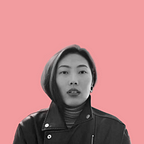Start UX Research gracefully: Goal-Directed UX Research
UX Research Methods
The well-known UX Research Methods:
- User-Centred Design.
- Goal-Directed Design.
- Activity-Centred Design.
Read more about the 3 Methods from
User-centered design, activity-centered design, and goal-directed design: a review of three methods for designing web applications, by Ashley Williams.
👩🏻🎨 Which one have you used?
In this article, we will only introduce Goal-Directed Design:
- Its origin and development.
- Process and Activities.
- Deliverables.
Goal-Directed Design
Goal-Directed Design was developed by Alan Cooper between 1983 and 2000 through the practice in the real world.
Process & Activities
The Goal-Directed Design has structured into 6 activities, and each activity will involve Qualitative Research with different targets. (I felt Alan has a strong affection for qualitative data 😃)
➊ Kickoff meeting:
Designers and stakeholders gather together to have a Fika and relax 👩🏻🎨🧑🏻💼🧑🏾🏭…
They talk about:
- What the product is and do?
- Who will use it and why?
- What are the goals?
- Who are the competitors and why?
- What are the resources and roadmap?
- … ( more as your team needs)
➋ Literature review:
Relax, It is not the literature review for your thesis :>
Useful readings:
- Internal documents: product marketing plans, brand strategies, market research studies, user surveys, competitive research, usability studies & metrics, and customer support data like Zendesk data, braze data, user forum archives and user reviews. (Explored what useful resource your organisation has. )
- Industrial reports: business and technical journal articles.
- Competitors’ resources, such as their user views.
- … and more
➌ Product/Prototype & competitive audit:
Actually, it should be prior to or parallel with Stakeholder Interview and SME (Subject Matter Expert) interview.
What to conduct are:
- Heuristic Review to examine both your current design and competitors’ product interfaces. You may benchmark and compare each against Interactions and Visual Design Principles.
- Ensure the strengths and limitations of your design solution compared to competitors.
- Scope current functionality.
➍ Stakeholder Interviews
Before you start User Research, you should be crystal clear about the Capabilities and Limitations of your Product Team, because
“design is a conversation with materials “
— Donald Schön
To implement, you need to
- Contact key members, such as executives, managers, engineer representatives, sales representatives, CRM etc.
- Meet with the stakeholders “separately”. A one-on-one setting promotes candour on the part of the stakeholder and ensures that individual views are not lost in a crowd. As in the fable of the blind men and the elephant, you may find that each business department has a slightly different and slightly incomplete perspective on the product to be designed.
- Ask questions: Preliminary product vision, Budget & schedule, Technical constraints & opportunities, Business goals, Roadmap, and User resources.
➎ SME(Subject Matter Expert) interview:
Okej, the Subject Matter Experts are authorities in the domain. They provide valuable perspectives on a product’s operations and users. They may be Expert Users or Specialists.
You ask them:
- Their knowledge about the product and its domain.
- Guidance about the functionality of mechanisms behind technologies, like crypto trading knowledge.
➏ Customer Interviews:
Finally, you meet with your customers!
However, you may think customers are the same as users. But think again, customers are the kind people who have purchased your product, while the users may check and leave without doing anything that you expect them to do.
You may ask your customers:
- What are your goals in purchasing the product?
- What are your frustrations with our current solutions?
- How do you use the product?
- How do you feel while using it?
➏ User Interviews
You got it! You will interview the Users who are the main focus of the design effort.
They are your current users and potential ones. They use your product may or may not contribute to your business goals, but you want to have their contributions.
You want to ask them:
- What are their goals for using your current product?
- When, where, and how will they use it?
- What do they need to learn to use your product?
- How do they think about their operations with the product and what do they expect? (Mental models)
- How do they feel while using the product?
Deliverables
- Personas: the user archetypes that capture users’ profiles, skills, environments, behaviours, and goals.
- Decision Tree: represent a flow or sequence that focuses on the questions to be answered or decisions to be made.
- Mental model: representation of users’ perceptions and reasoning in a given context or process.
- Taxonomy: usually a hierarchical map or list outlines users’ perception of how any given concept or piece of information is related to another.
- Affinity Diagram: cluster data by groups.
That is all about Goal-Directed Design, thanks for taking your time to read this article, hope you found it interesting or inspirational.
Qualitative Research and Quantitative Research provide critical data for Goal-Directed Design processes. If you want to read about their data and contributions, click this article ☞
